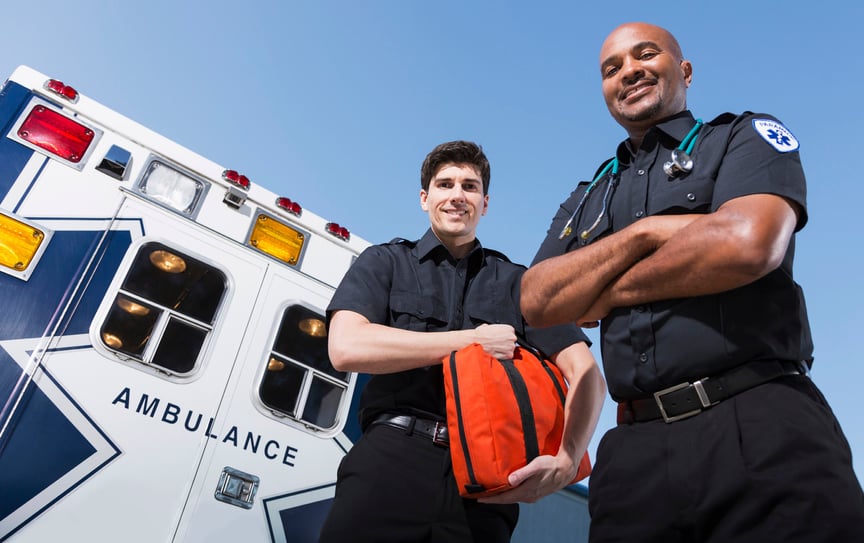4 Must-have Data Points for Dispatch-Billing Alignment and Maximum Reimbursement
Safety Sells: How to Acquire More Facility Contracts
Hospitals have patient safety teams and most facilities have a safety team, so why does it seem hospitals and facilities tend to get lenient around placing their patients in the “lowest bid” ambulance?
Was this information valuable?

Hospitals have patient safety teams and most facilities have a safety team, so why does it seem hospitals and facilities tend to get lenient around placing their patients in the “lowest bid” ambulance?
As a territory manager for ZOLL in the mid-Atlantic region, I get to work with some of the brightest and most successful agencies, both emergent and non-emergent. I hear the struggles of competing for contracts almost on a daily basis, and how these organizations are so passionate about their patients, that it almost hurts when they lose out to a lower bidder.
Technology can be a major asset to your operations and can be used as a differentiating factor between your agency and the competition. Our Road Safety System is a powerful safety device by itself, but we’ve always seemed to have a difficult time positioning it to non-emergency services. I hear “We don’t drive lights and sirens” or the usual “We don’t have a safety problem.” While both of those points may be perceived valid, it was always a difficult proposition to continue discussing Road Safety when there simply wasn’t enough interest in the safety aspect alone.
One day while stuck in D.C. traffic, an idea came to me, and I tried it during my next meeting. Instead of trying to position Road Safety as a way to only increase safety within the organization, I’d try pairing it with the idea that it can help agencies win more contracts by being a differentiator between them and the competition. It worked! I had the opportunity to attend a ‘contract meeting’ with one of my customers where they discussed with facility managers points why Road Safety is the reason that they should do business. The discussion focused on the following points:
1. You [Facility Managers] Care About the Safety of Your Patients
As a facility, they have a fiscal responsibility to keep their patients safe; not only for their image, but the legal ramifications of a mishap could spiral into bankruptcy. Most of the facilities I dealt with had a safety team or a patient advocacy team that made sure their patients were kept safe from dangerous areas and situations. However, it seems that the contract negotiators are just tasked with finding a transport service to move patients back and forth, usually under the premise of finding the lowest-bidder. A gentle reminder that their facility has these teams in place is a great way to prime the conversation about to happen.
2. We [Ambulance Operators] Care About the Safety of Your Patients
OK, admittedly, I think this is a pretty common claim. I’ve never heard anyone try to win business by saying “Meh, your patients’ safety is not a high concern of ours.” But here is the difference: by having Road Safety in your vehicles, you can prove that you care about patient safety, and that you’ve made investments to ensure it.
You can show your agency’s reports from ZOLL Online, whether it’s a grading report or an overview; you can discuss what metrics the system collects, and how your drivers have training on the system and understand why safety matters.
3. Why Put Your Patient in Any Other Ambulance But Ours?
After discussing the above two points, this seems to be the most powerful line. “Mr. Facility, as we discussed, you care about the safety of your patients when they’re inside the facility. Why would you put them in any other ambulance, but ours?” By investing in safety, you’re able to offer a compelling reason why you are different than other services as well as easily demonstrate your capabilities. Ultimately, both the facility and your agency want the same thing; to enter in to a mutually beneficial relationship focused on providing safe transportation. What better way to ensure this than by having technology help monitor and change driver behavior?
While this method has worked for many of my customers, it does require a true agency wide dedication to safety. You can’t simply buy a few boxes and claim you’re safe, as showing the data is the most important aspect. (You wouldn’t want to show data proving terrible driving habits, would you?) By being transparent and providing driver grading reports, hospitals should understand and remember the importance of the patient’s comfort and safety during the discharge process; and hopefully elect to do business with someone who feels the same.
Related Posts
How EMS Agencies Can Reframe Need and Refocus Resources With Geospatial Analytics
How To Minimize Radio Chatter and Reduce Guesswork With Smarter Dispatch Resource Management
ZOLL Pulse Blog
Subscribe to our blog and receive quality content that makes your job as an EMS & fire, hospital, or AR professional easier.
ZOLL Pulse Blog
Subscribe to our blog and receive quality content that makes your job as an EMS, fire, hospital, or AR professional easier.




